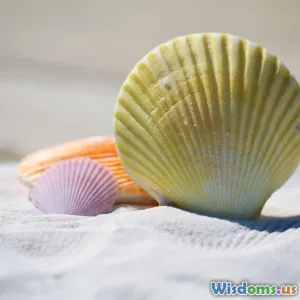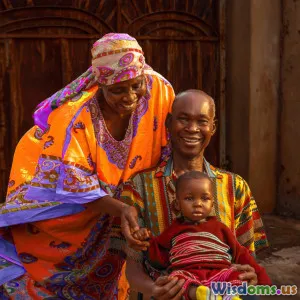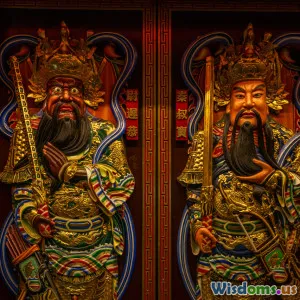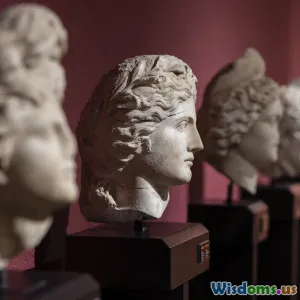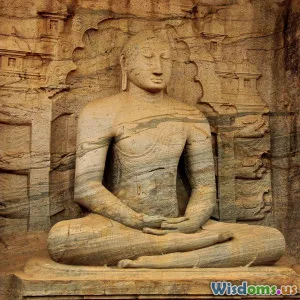
Comparing Chinese Pangu and Norse Ymir Myth Creation Stories
8 min read Explore the mythic parallels and cultural insights in Chinese Pangu and Norse Ymir creation tales. (0 Reviews)
Comparing Chinese Pangu and Norse Ymir Myth Creation Stories
Introduction
Creation myths are windows into the soul of a culture, revealing how ancient peoples comprehended the cosmos and humanity’s place within it. Among the rich traditions worldwide, two fascinating creation stories stand out: the Chinese myth of Pangu and the Norse saga of Ymir. Though continents apart, these myths intriguingly parallel and diverge in portraying how the universe and life emerged from chaos. This article delves deeply into both narratives, offering careful analysis of their symbolism, cultural contexts, and philosophical implications—illuminating universal human questions through two unique cosmologies.
The Narrative Foundations
The Chinese Myth of Pangu
According to Chinese mythology, before the world existed, there was a formless chaos—an egg containing the potential of the universe. Inside this cosmic egg, Pangu, a giant being, slept for 18,000 years. When he awoke, he split the egg open, separating Yang (light, heaven) from Yin (darkness, earth) with his giant axe. To prevent the two from merging again, Pangu stood between them, growing taller each day for 18,000 years. After establishing the fundamental duality of heaven and earth, Pangu died. His body then transformed into various elements of the world: his breath became the wind, his voice thunder, his eyes the sun and moon, his limbs mountains, blood became rivers, and hair trees and stars.
This narrative positions Pangu as both creator and progenitor, embodying the unity of cosmic forces. It reflects quintessential Chinese philosophical concepts such as Yin and Yang, and the interconnectedness of beings and the universe.
The Norse Myth of Ymir
In Norse cosmology, before the world existed, there was only the emptiness void called Ginnungagap. On one side sparkled the fiery realm of Muspelheim and on the opposite, the icy realm of Niflheim. Where hot and cold met, ice melted and gave birth to a primordial giant named Ymir. He is the ancestor of all giants and the first living being.
Ymir's sweat produced male and female giants. Later, the god Odin and his brothers Vili and Ve killed Ymir, and from his body fashioned the universe: his flesh became the earth, blood the seas, bones mountains, teeth cliffs, skull the sky, and brains the clouds. The gods then planted Yggdrasil, the world tree, rooting the cosmos in divine order.
This myth encapsulates themes of creation through sacrifice and duality between elemental forces reminiscent of natural Norse surroundings.
Symbolism and Thematic Comparisons
Creation Through Division and Sacrifice
Both myths begin with an undifferentiated void or primordial soup symbolizing potential. Pangu and Ymir emerge as first beings from chaos and subsequently divide or sacrifice themselves to create the ordered world. This act symbolizes the transformation of formlessness into form.
- Pangu splits the cosmic egg, separating Yin and Yang, emphasizing harmony arising from opposites.
- Ymir is a living sacrifice whose body is dismantled to spawn the physical world, highlighting violent creation through death and renewal.
These processes reflect different cultural attitudes: Chinese cosmology stresses balance and gradual formation, while Norse mythology underscores struggle and cyclical transformation through conflict.
Cosmic Dualities and Elements
Both narratives imbue nature with personified origins:
- Pangu’s body parts become features of the natural and celestial landscape, echoing Daoist interconnectedness.
- Ymir’s dismemberment constructs earth’s geography and heavens, integrating animistic reverence with shamanistic elements common in northern Europe.
The prominence of elemental forces—fire/ice or Yin/Yang—highlights how ancient peoples explained the physical environment and its enigmatic phenomena.
Anthropogenic Origin and Divine Relationship
Pangu is not only the creator but also part of the elements he forms, symbolizing the unity of humans and cosmos in Chinese thought. Norse myths position the gods as separate creators who shape the universe from a primordial giant’s body, asserting a hierarchical divine order.
This difference illustrates contrasting views:
- In Chinese tradition, humans arise naturally within the cosmos’ unity.
- Norse legend views humans as creations or pawns within an ongoing cosmic struggle, underscoring fate and conflict.
Cultural Context and Philosophical Insight
Chinese Emphasis on Harmony and Balance
Pangu’s story harmonizes with Daoist philosophy, which stresses the balance of opposites and the natural flow of the universe. The myth encourages respect for nature’s cyclical rhythms and reinforces cultural ideals of harmony in society and environment. Its long, patient creation span mirrors gradual societal and agricultural development that characterized ancient China.
Norse Focus on Conflict and Renewal
Norse mythology arose in a harsher, more volatile northern climate, reflected in its themes of struggle, sacrifice, and rebirth. Ymir’s violent death presages Ragnarök, the prophesied end of the gods and world—a cycle of destruction and renewal central to Norse worldview. The myth conveys awareness of life’s impermanence and the resilience through hardship.
Modern Reflections and Cultural Influence
The enduring appeal of these myths can be seen in literature, art, and popular culture. For example:
- The Pangu myth underpins modern Chinese philosophies promoting ecological balance and sustainable living.
- Ymir’s story influences Scandinavian cultural expressions and has inspired works such as Neil Gaiman’s "Norse Mythology," which reintroduces these stories to global audiences.
In comparative mythology studies, the Pangu-Ymir narratives exemplify Joseph Campbell’s concept of a “monomyth” and reveal how humans universally grapple with origins through familiar archetypes yet produce uniquely localized stories.
Conclusion
The creation stories of Pangu and Ymir offer profound insights into human creativity, cultural values, and existential reflection. Though emerging from vastly different civilizations, both myths shape our understanding of cosmic order, duality, and the nature of life. Where Pangu’s legend teaches balance and interconnectedness, Ymir’s saga embodies transformation through conflict and renewal. Together, they enrich our appreciation of how myth functions—not merely as ancient tales but as living frameworks guiding contemporary exploration of identity, environment, and meaning.
By comparing and appreciating these myths side by side, readers gain a multifaceted glimpse into the eternal quest to narrate beginnings and comprehend our place within the universe.
Rate the Post
User Reviews
Other posts in Cultural Studies
Popular Posts










